Wrangell is located in the middle of the Tongass National Forest, and a few miles from the delta of the mighty Stikine River. The Stikine is the fastest flowing navigable river in North America, 330 miles long, and one of the few free-flowing rivers remaining. It winds through northern British Columbia before crossing into Alaska for its last 30 mile run.
Wrangell has a long history having been ruled by four nations, the Tlingit, Russians, United Kingdom and Americans. It had been a base for fur trading between Indigenous tribes before the Russians arrived on the scene. Hudson’s Bay Co established for fur trading base, leasing the access to the fur trading on the Stikine River from the Russians for an annual payment of 2000 land otter skins.
In 1861 a gold rush on the Stikine brought the arrival of hoards of gold seekers. Wrangell morphed to a gold rush boom town. As steamship service up the Stikine started, the Tlingit rioted, claiming the noisy craft would the drive away the salmon and moose. They were paid off with Hudson’s Bay blankets.
The gold rush died out in a few years. In 1867, the Russian flag was replaced by the American flag as Alaska was sold to the US. The Cassiar gold rush started another boom in 1872 but it was over by 1888. The town survived with canneries, fishing and a lumber mill, thought to be the first mill in Alaska.
In the late 1890s, the Klondike gold rush brought more prospectors to take the back door route up the Stikine, through Telegraph Creek, British Columbia, to Teslin Lake and the Yukon River. The gold rush was over around the turn of the century and, at the time, the town had a population of about 1500. More canneries opened adding shrimp and crab to the production. Nearby lumber camps supported the town’s businesses until economic and environmental restrictions forced the closure of lumber mills and logging in the SE Alaska.
Today, Wrangell’s economic drivers are maritime industries including commercial fishing, a boat works facility and tourism as more cruise ships add Wrangell to their itinerary.
We arrived on May 11th, docking at the south end of the long dock but, after some calculations, we figured our keel might be sitting on the bottom at low tide. We heard about boats sitting in the mud, heeled over with their masts hanging over the gangway. Negative tides were predicted. The north end of the dock had more depth but was full with a few small runabouts. However, they were leaving in an hour or so. We were able to move the boat up where the depth was a little better.
We checked in with the marina office and had a look at the showers/laundry a block up the street.
Over the next few days, we poked around town, got our laundry done and did a little provisioning. Food prices were high and the selection of fresh vegetables and fruits limited.
Wrangell is a typical SE Alaska town with false fronts and colourful buildings. Many historical buildings like the fort and hotel were destroyed by numerous town fires.
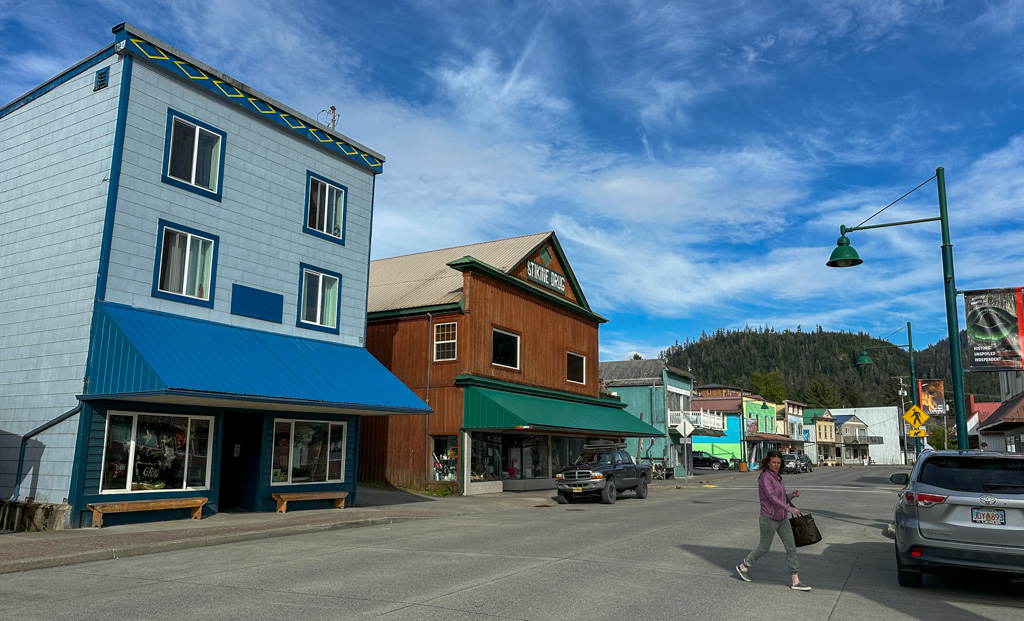
A Tlingit cultural site sits on an island in the middle of the harbour.
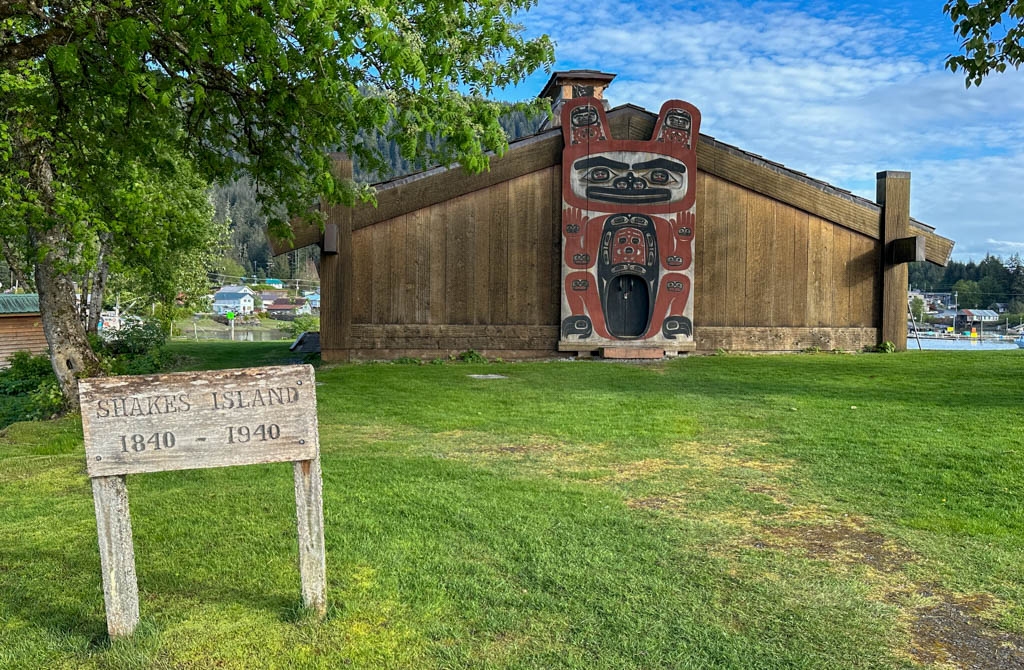
A fallen Tlingit totem pole.
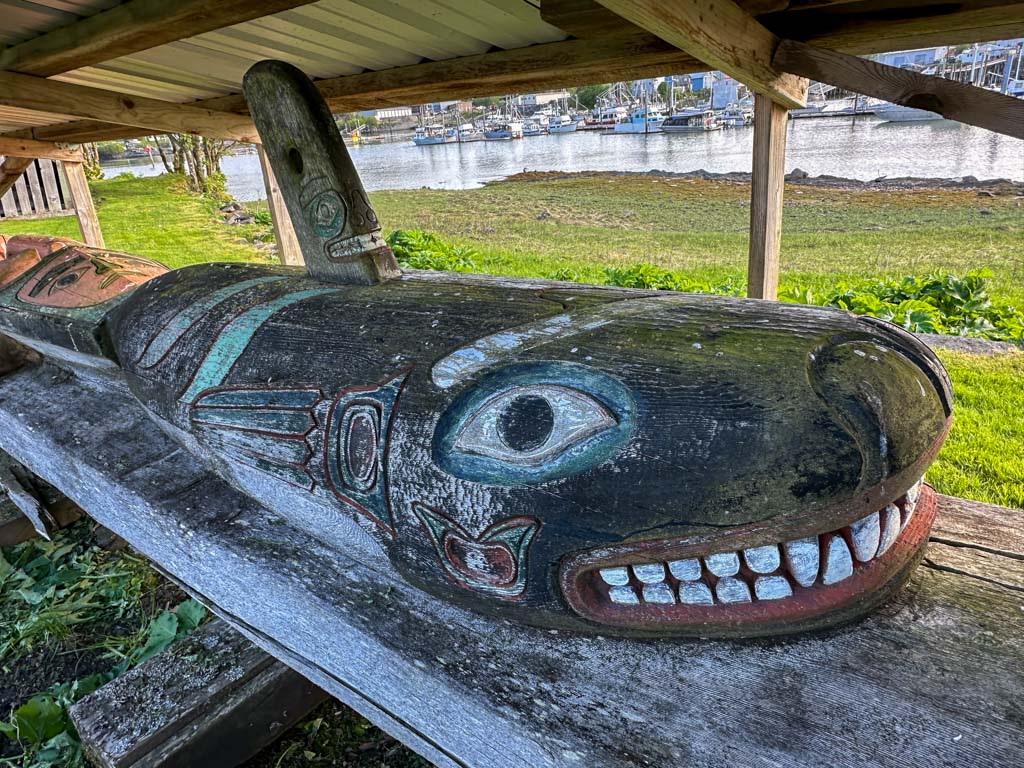
Homes varied in tidiness and colour. Below, this homeowner found a unique use of old floats.
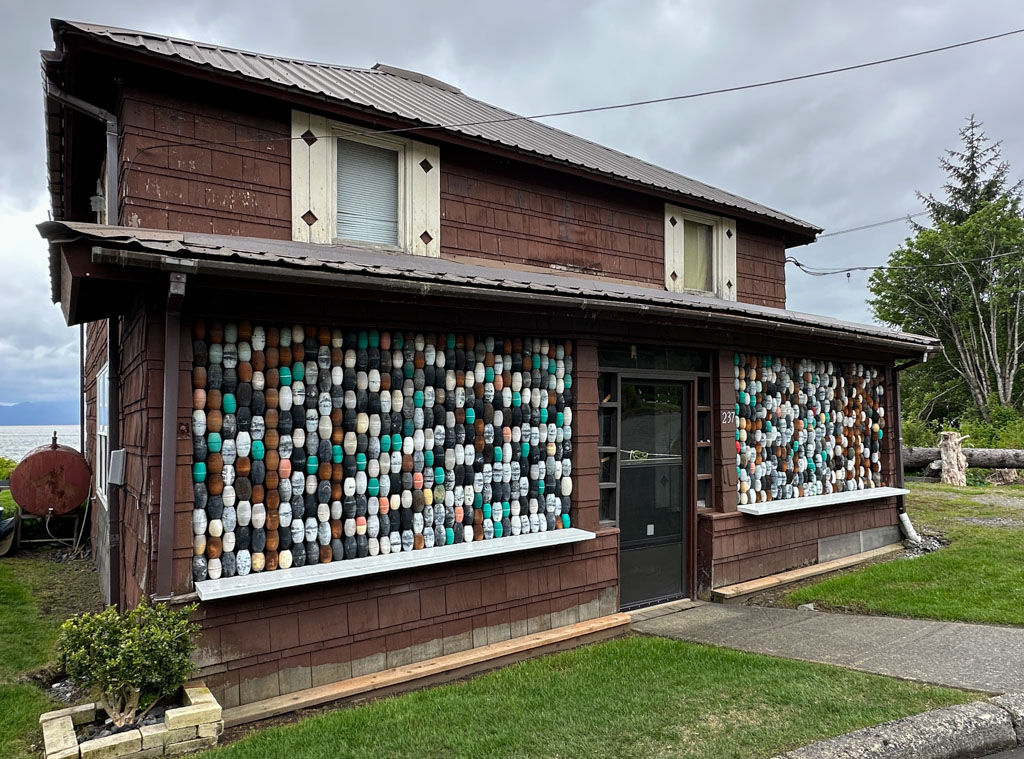
The Alaska flag with the north star and big dipper is proudly featured on the garage of this home. I thought it was an interesting choice of a state flag. With the near incessant cloud cover and long daylight hours, we only saw the stars once so far. We were told April was sunny and warm in SE Alaska!

Many homeowners are “collectors”. You never know when you might need something like a whale bone or wheel for a boat. Nothing is that easy to find in Alaska. Skunk cabbage added to the beach-front yard’s colour.
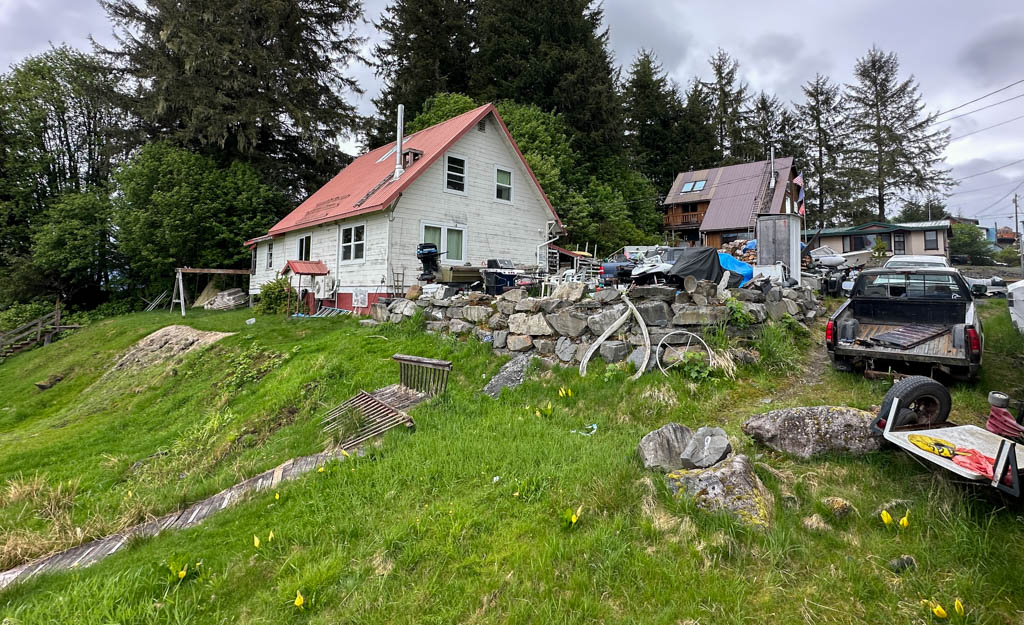
This cart is a reminder that Wrangell has a 9-hole golf course near the airport.
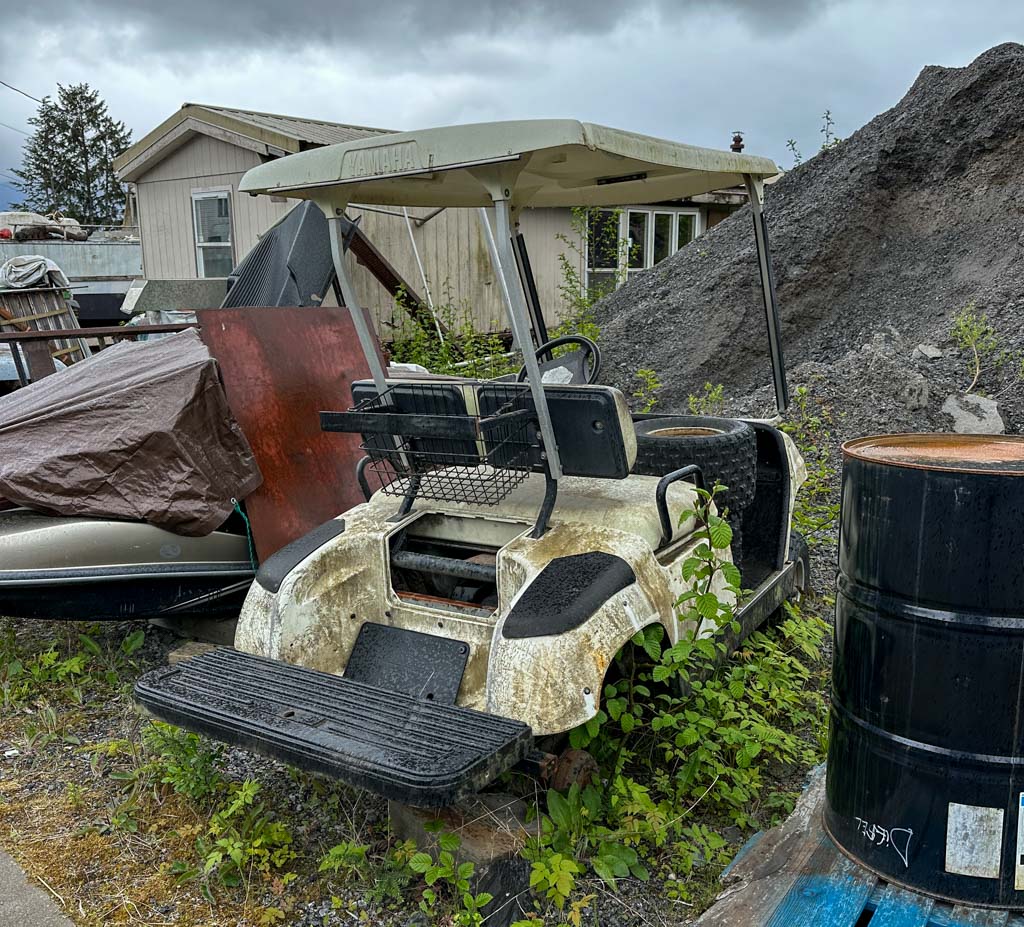
This blooming rhododendron must be used for Christmas lights in winter.

Below a 2050sf house on the water built in 1950 is listed for $470,000USD. Living in Alaska is not inexpensive.
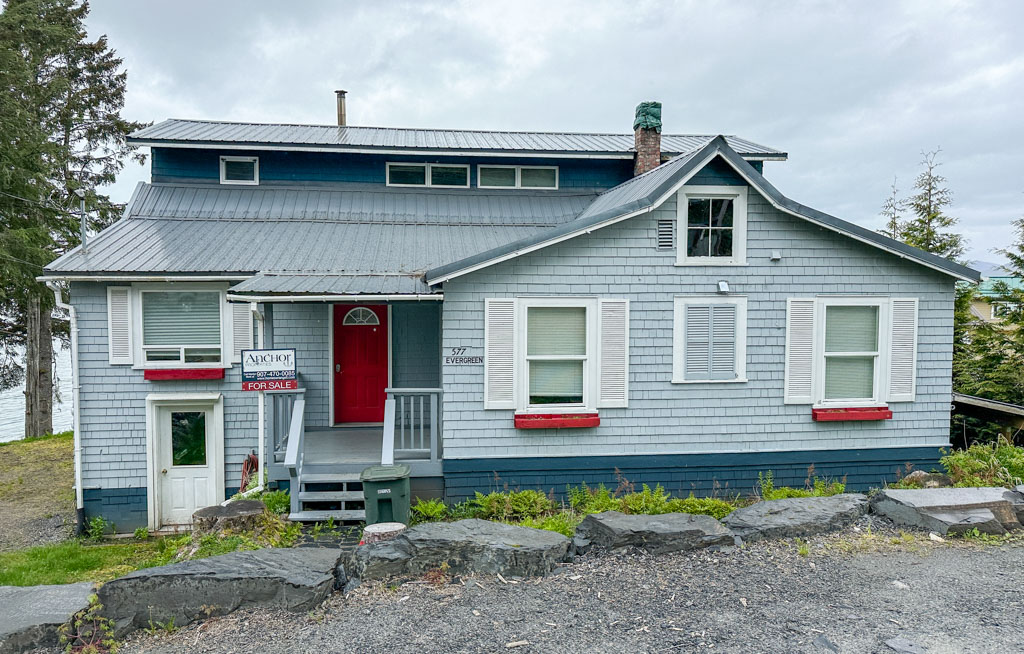
Monty hiked to Mount Dewey and took these images from the look out. Al & Irene counted about 650 steps to reach the lookout.
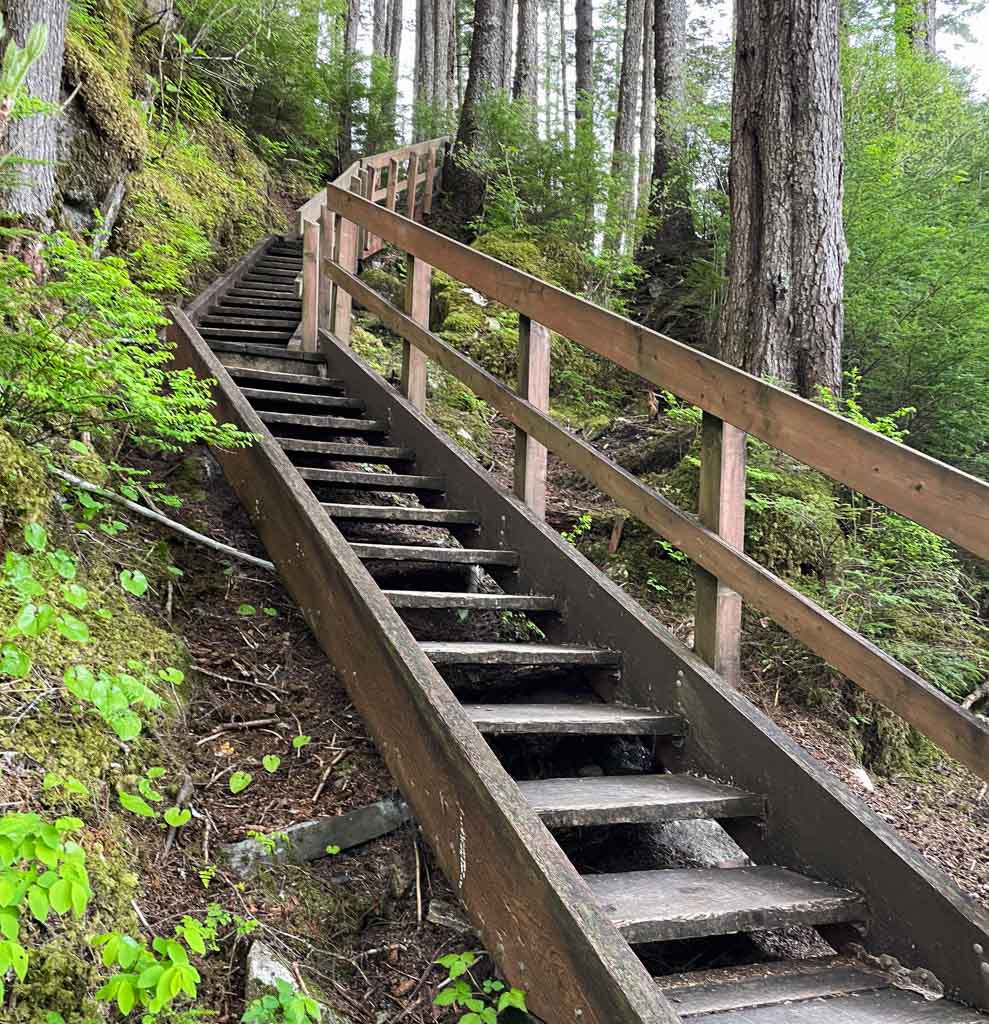
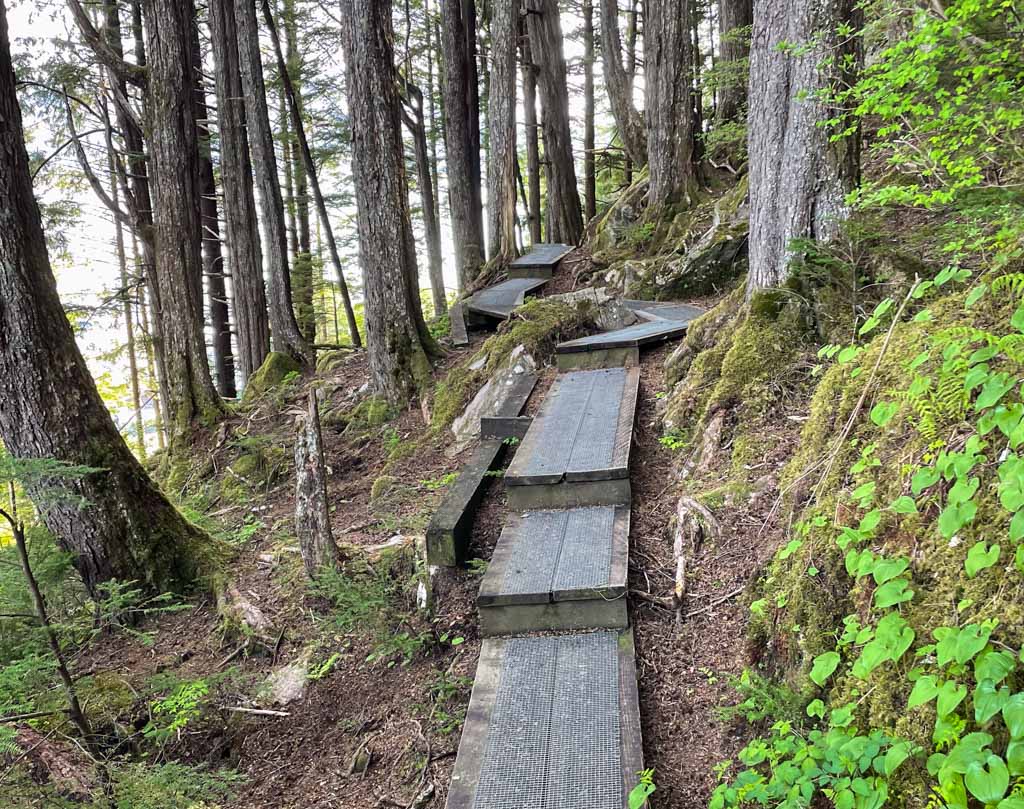

We took a stroll to the Petroglyph Beach. The history is not clear on who created these petroglyphs.
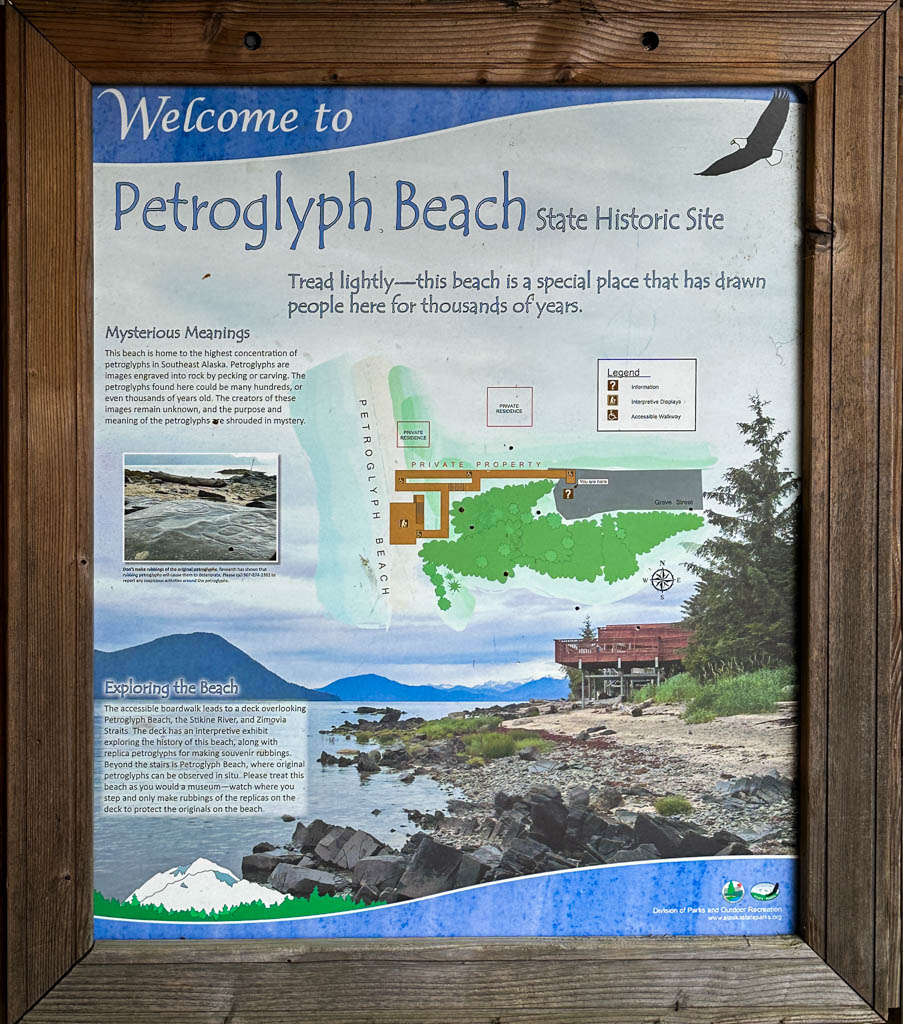
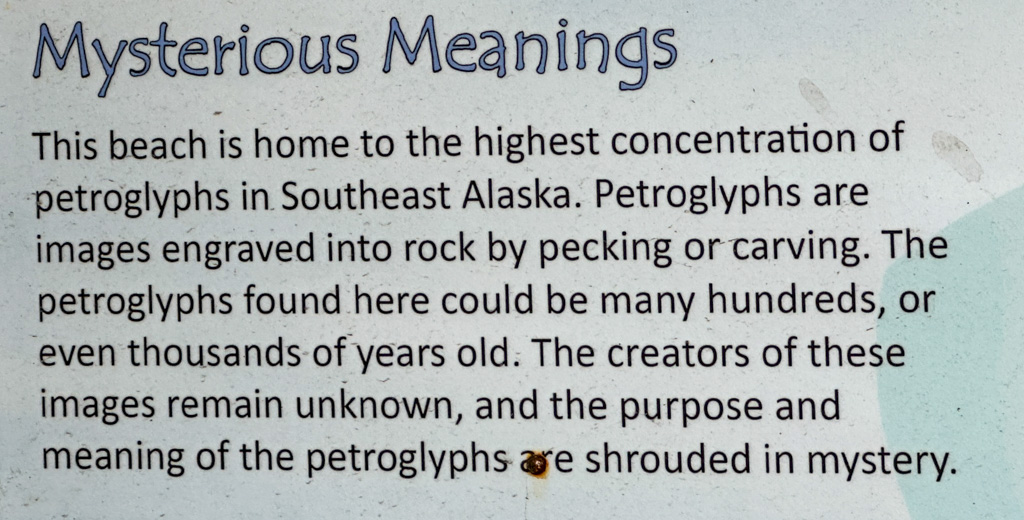
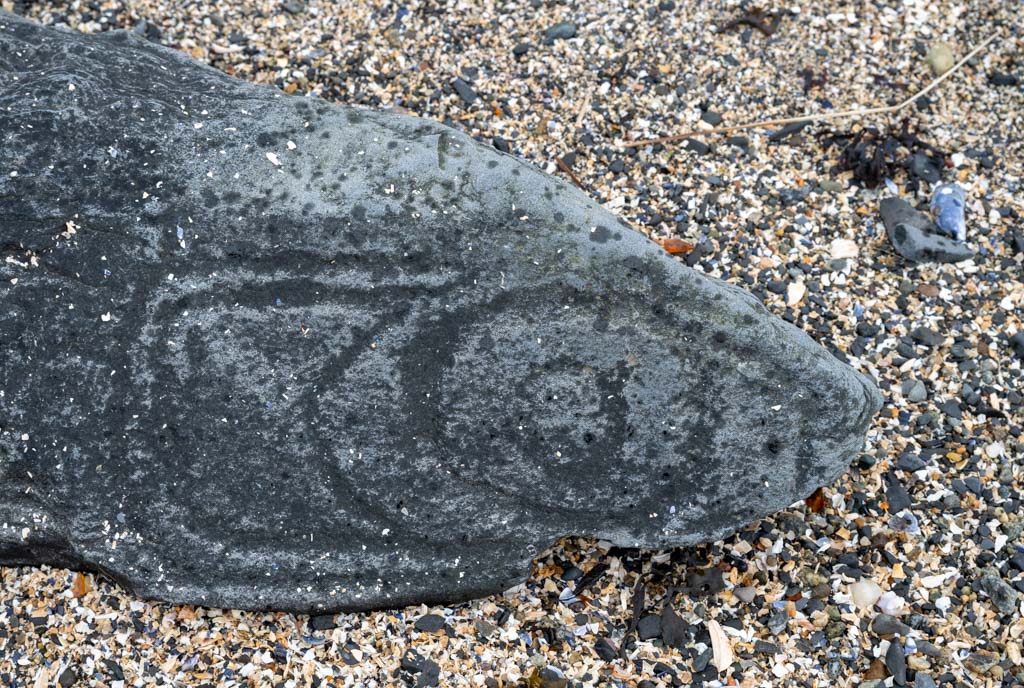
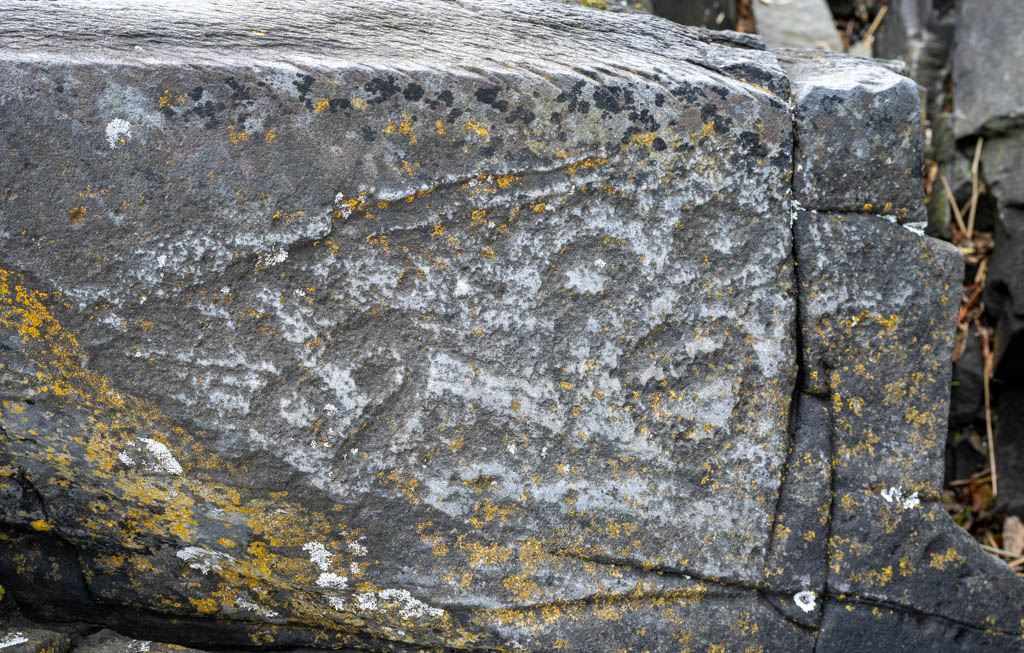
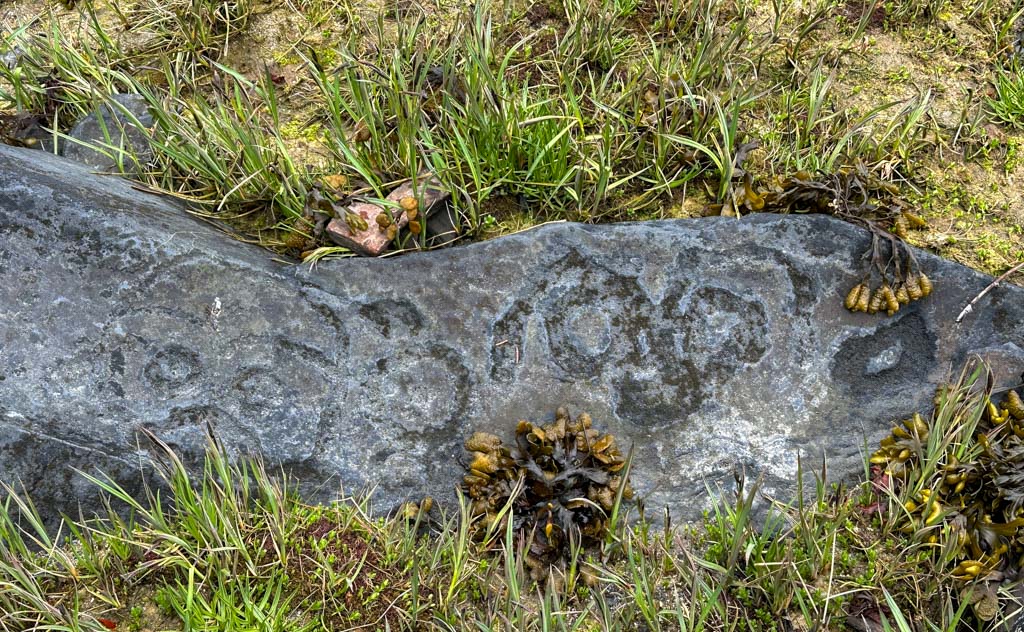
We went to the Marine Bar for dinner, hoping to catch a Canucks hockey game but the staff were very busy and could not find the NHL channel. Baseball, darts and axe throwing competitions were the TV entertainment that evening. It was Mother’s Day and the restaurant was packed with many patrons getting takeout. Our food order took a long time to arrive. Below, the full parking lot.

On leaving the harbour, we passed this Nat Geo boat. Glad we beat their staff to the laundry in town! It won’t be the last time we cross paths.
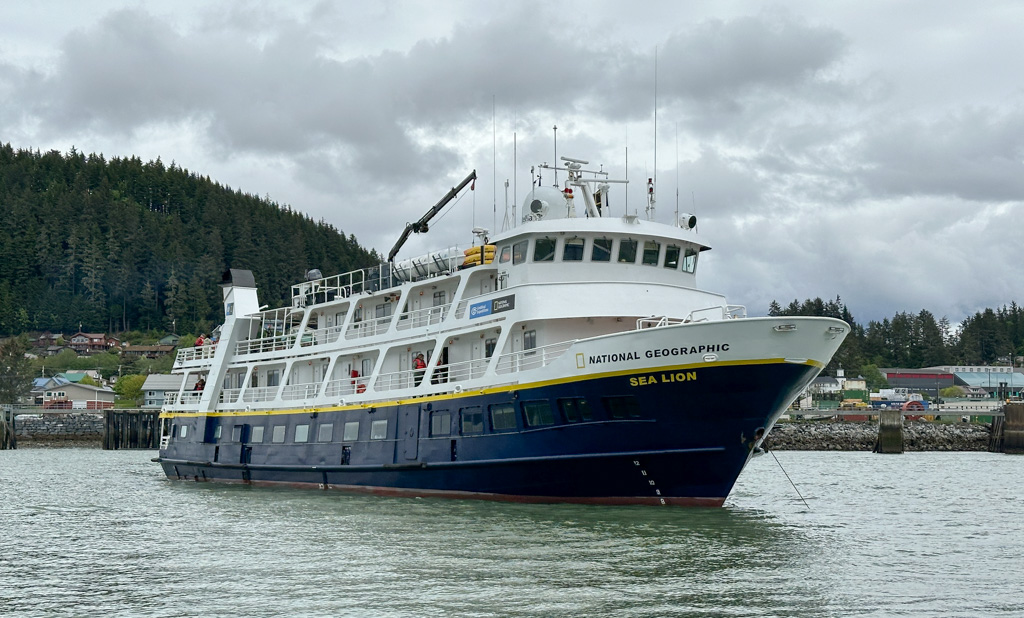
Onward to Petersburg, known as Little Norway.

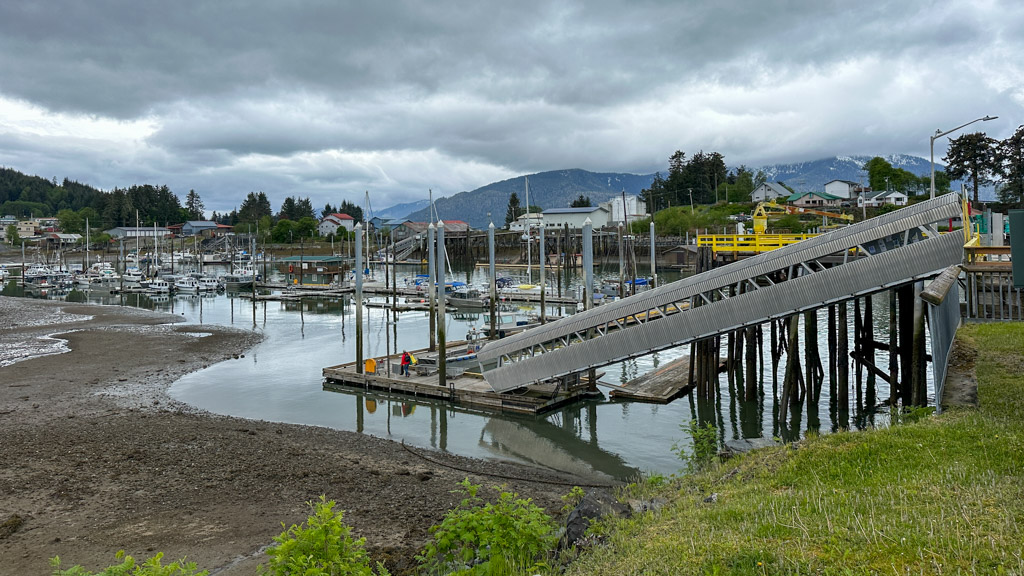
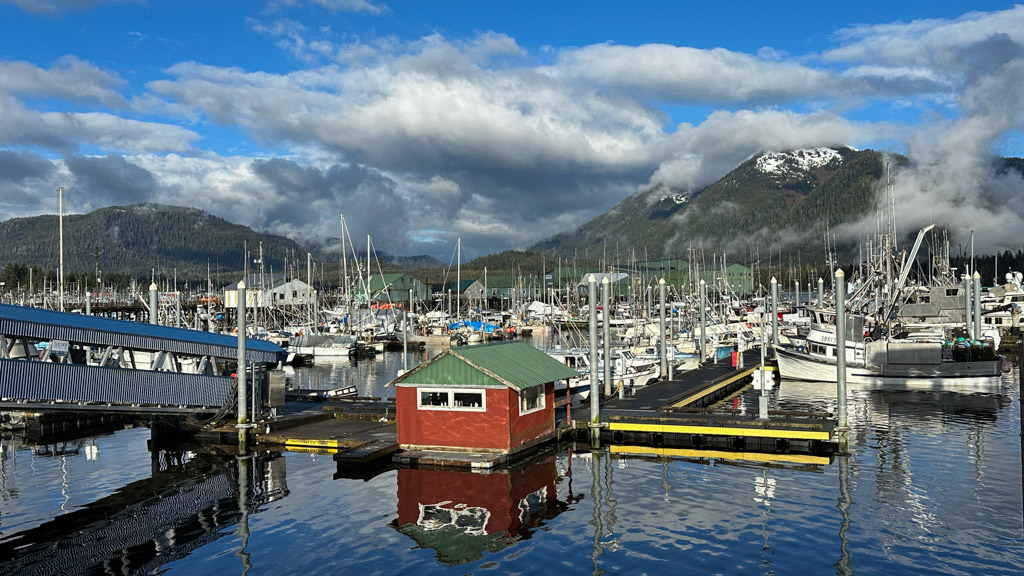
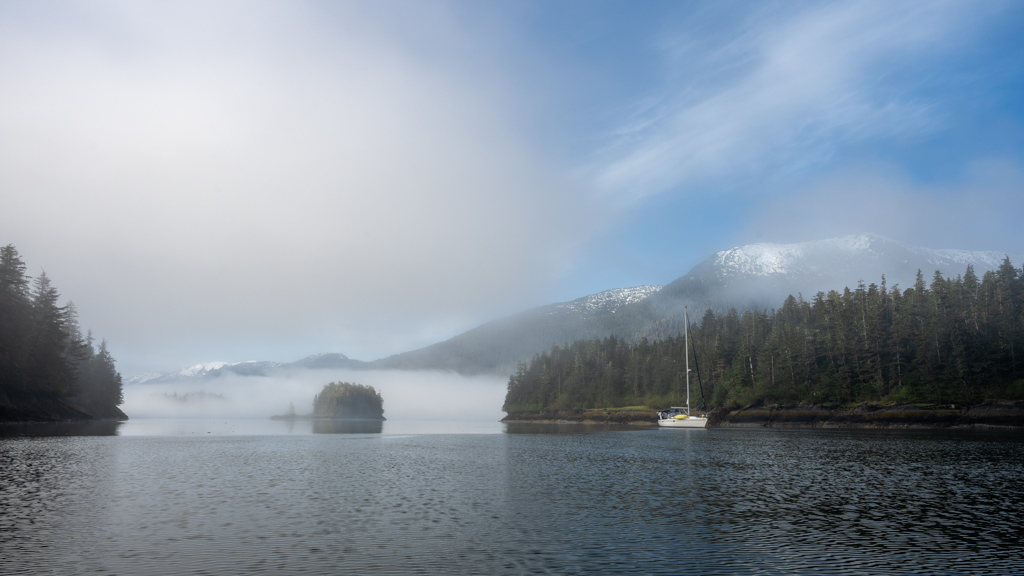
One comment in this post
Hi Margie & Monty, I am certainly learnign lots about the Canadian and Alaskan coasts from your detailed travel exploits and accompanying photographs!! Brad